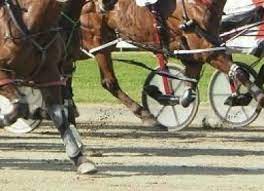As mentioned previously in Mane Attraction columns, Racing Secretaries have a very difficult job.
They have to consider many facets in putting together fair and equally balanced fields to give owners an opportunity to reap some rewards for their investments.
 After all, training bills per month aren’t cheap and most owners, especially the ones with smaller stables competing against the few gargantuan, have a tough time not drowning in debt.
After all, training bills per month aren’t cheap and most owners, especially the ones with smaller stables competing against the few gargantuan, have a tough time not drowning in debt.
But what about the bettor?
Realizing that their influence on the pari-mutuel side of the sport has been reduced because of casino and legislative infusion, they still deserve races that are competitive in nature with a chance to make a “buck or two” at the mutuel windows—whether those (few) windows be at a racetrack or the window on a smart phone.
One savvy member of the BDHC (Broken Down Horseplayers Club) brought that to attention from the last Mane Attraction in commenting about the “leaning back syndrome,” now in use at racetracks by many catch-drivers across North America.
That tactic puts more distance between horses back of the leader during races and makes it all the much tougher to get to the winner’s circle with more lengths to make up during a race—whether the difference be another half-length if the horse is in the garden spot or another three or four lengths or more if the horse is near the back of the pack.
Our BDHC member said, “I know about the ‘aerodynamic’ stuff and supposedly less friction against the wind and all that stuff but, remember, it puts many of the bettors out of business just a few seconds after the start.
“When you’re 10 or 12 lengths back early, you can throw the ticket down the sewer and, if I go broke after the sixth (race), I’m outta there. Oh, I might try a “get even’ bet one more race but, after that…
“It’s the same in every sport—not just horse racing. If my football team is losing 35-7 at half time, I’m switching channels.
“If my baseball team is losing 7 to 1 after six (innings), I’m outta there. At least I’ll beat the traffic!
This BDHC member and General in the “Send It In Army” has some valid points backed up by statistics, as well.
“Let’s say I have a “double saw” ($20) bet on a horse with an outside post…meaning six, seven or eight at Yonkers.

“Let’s say the six post, for example, and I think he’s got a shot to win after seeing him race last time. I might throw a double saw on it…at 10 or 12 to 1.
“Of course, he’s not leaving from there—very few do from out there—and he gets away sixth. If the guys are sitting up straight, I’m (the bettor) around 6 (lengths) back early if the horses are nose to helmet.
“When these guys lean back, I’m almost nine lengths back. Now you know that some races are won by a nose, head or neck and others are won by a length or two or three and that extra distance makes it much more unlikely that I’ll cash (a ticket).”
The BDHC guy has a valid point.
When a race secretary puts together a race, there’s nothing more satisfying than a photo finish because they have done the enviable of making a race a competitive one.
Look at it this way…If there is a competitive field going to the gate, and a particular horse is near the back of the pack in the field after the start, the question is…Is that horse, supposedly, of equal talent class-wise, in sixth at the halfway mark seven or six or, even, five lengths back picking up some cover, capable of out-gunning their opponents by that margin in the final half or quarter by more than one second in time or five or six lengths in distance or more?
We see :26 quarters regularly coming home these days. Is a horse capable of sprinting home in :24.3 or :24.4 or :25 to get to the winner’s circle for the bettor to cash his ticket? Maybe…but, most likely, not.
Being more reasonable, if it’s a “6” claimer we’re talking about and the final quarter is reasonably expected to be :28.4 or :29, can the eight-year-old or 10-year-old gelding with 150 or 200 lifetime starts under his girth capable of going :27.3 or :27.4?
Maybe…but more than likely, not.
The extra distance between the leaners is a killer for the owner (sitting sixth halfway through) and the bettor.
“I (‘ve) seen guys getting fined for going slow quarters but I (‘ve) never seen one get a speeding fine for going the first quarter in :25 and change…that’s suicide for me and my double saw.
“I come from the (Stanley) Dancer era when he got to the quarter in :29 and change and caught ‘em all napping to the half in 1:01 or something. I had him in a few of those back then and he and (Billy) Haughton and other guys that knew how to rate horses made me some good money both on the lead or off the pace in New York.
“The reason I went for the off-the-pace route is, probably because I can’t get used to seeing a half in :56 with another half in :56 right back! I’m waiting for the closers to kill .em!”
So, we’re talking bettors here, the aging and dying lifeline of our sport…trying to turn the harness racing clock back—harness racing saving time, instead of daylight-saving time.
And the sport no longer caters to strategy—just SPEED.
If you have a 1:52 two-year-old pacer, it’s probably not enough to cover your investment.
If you have a 1:54 14-year-old pacer, it might not be enough win a “4″ claimer…but there aren’t too many of those around these days.
We’ll give the trotters a couple of seconds.
In recently looking at the Saturday-Sunday-Monday results of some overnight races on all sized tracks, the results were similar, no matter the track size.
The first track was a half-mile oval that had 13 races with four gate-to-wire or “near” gate-to-wire winners, another that took command at the 3/4 mark, three more that were second at the third station, three that came on to win from third, one from fourth and one from fifth.
Only three hit the board on the entire racing card after being sixth or worse in the early stages.
At another 1/2 mile oval, there were nine wire-to-wire scores, four winning from the garden spot only one from as far back as fourth finding the winner’s circle.
Stretching things out a bit to five-eighths mile tracks, there were four that enjoyed front end victories, three more that won from the garden spot or moving forward into second at the third station and one came from fourth. One other made a bold move from third to the half and took charge on the backside to win.
Combining a couple more half-mile tracks in New York, their 22 combined races had six wire-to-wire winners, nine from the garden spot, four were third at the 3/4 mark and two came from fifth—one by “DQ.”
Even at a larger 7/8ths track, eight of the 11 races on that particular program were won on the front end or from the garden spot.
The BDHC member went on saying, “I’m not a complainer…I will bet on mostly anything and have for 50 years…but I do want a fair chance to win without these guys costing me a few more lengths and even lengthening my odds of winning that’s on the tote board. And that’s what it is if I’m betting on a long shot I like from an outside post. If he’s 15 (on the board), I should be getting 25—just like any prop bet. I might get +200 (in football) if I’m picking a guy to pass for over 250 yards and +300 if it’s 400 yards.”
And, of course, there are safety factors considered here—or should be considered—but speed has played such a relevant role these days with the record books looking for the next one with the announcer screaming WORLD RECORD…as the BDHC guy rushes to the window to cash a ticket, tear one up or plunk $20 on a race less than one minute away at another track muttering “WHO CARES?”
by John Berry, for Harnesslink

 USA
USA Canada
Canada Australia
Australia New Zealand
New Zealand Europe
Europe UK / IRE
UK / IRE



